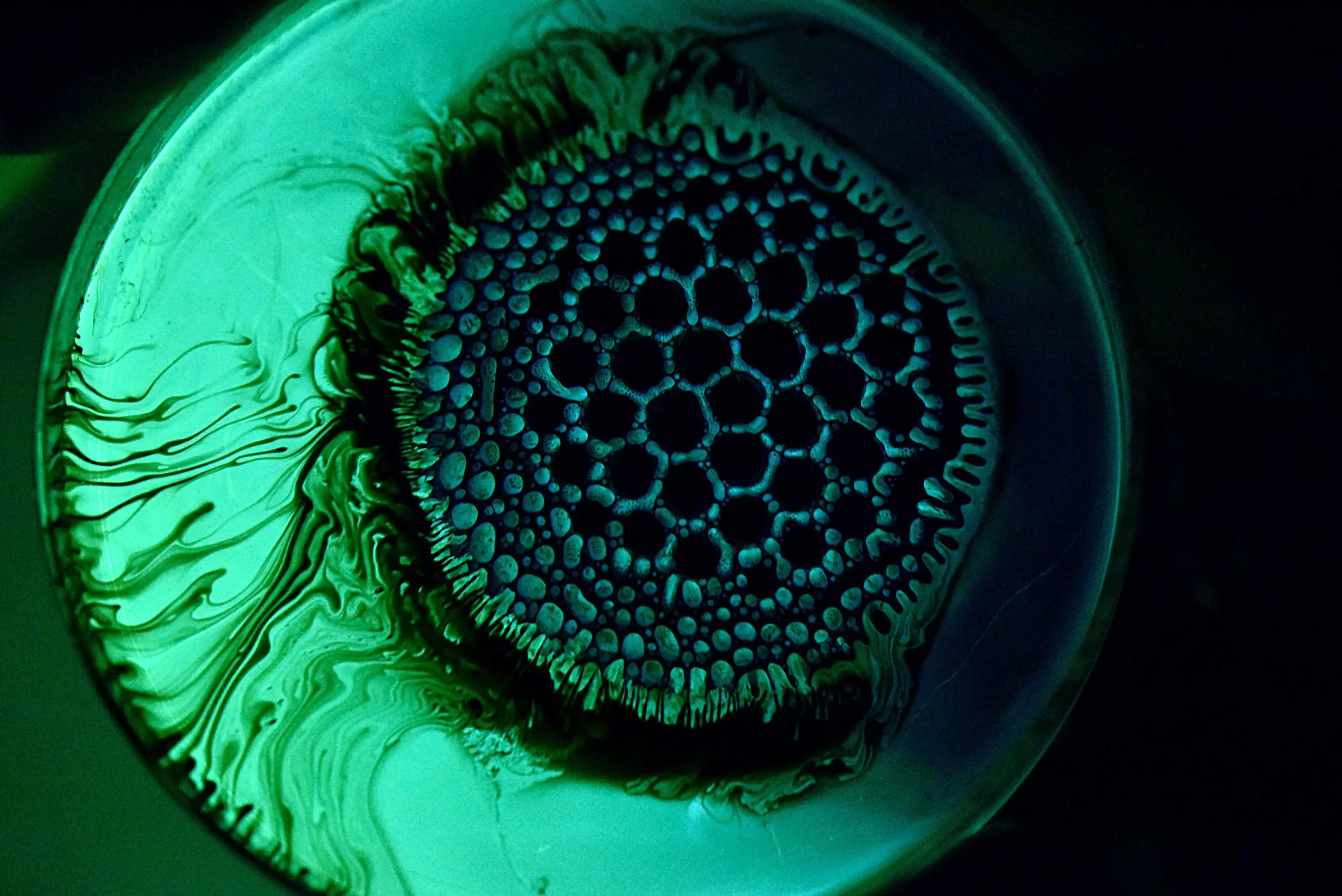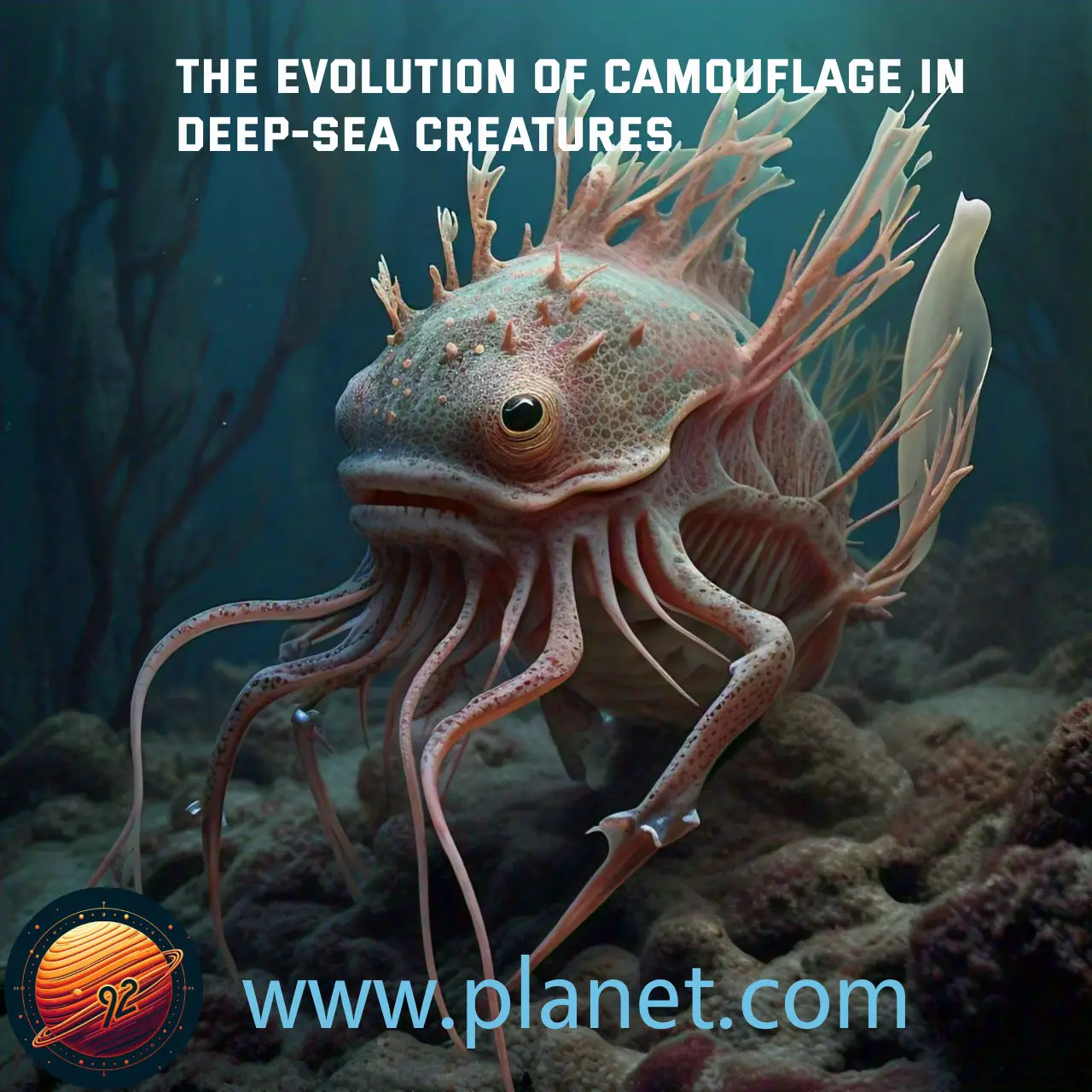The deep sea is a world of darkness, where sunlight barely penetrates and survival strategies are constantly evolving. One of the most remarkable adaptations of deep-sea creatures is their ability to use camouflage for protection, hunting, and evasion. Camouflage, a critical evolutionary trait, allows these organisms to blend seamlessly into their surroundings, making them nearly invisible to predators and prey alike. This phenomenon is particularly complex in the deep sea due to the unique environmental challenges, such as extreme pressure, low light conditions, and scarce food resources.
Over millions of years, deep-sea creatures have developed an astonishing array of camouflage techniques. These adaptations are not only a testament to the creativity of evolution but also provide valuable insights into how life can thrive in some of the planet’s most extreme habitats. From bioluminescent displays to transparent bodies and color-changing abilities, the evolution of camouflage in the deep sea is a fascinating chapter in the story of life on Earth.
1. The Environmental Context of Deep-Sea Camouflage
The deep-sea environment presents unique challenges that have driven the evolution of specialized camouflage techniques. Below 200 meters, the ocean is almost completely dark, with only a faint blue glow from the sun reaching the mesopelagic zone (200–1,000 meters). Beyond this, in the bathypelagic zone (1,000–4,000 meters) and deeper, total darkness dominates. In these conditions, creatures rely on alternative methods of survival, and camouflage plays a pivotal role.
The scarcity of food in the deep sea has also been a significant evolutionary pressure. Predators are constantly on the hunt for the few available prey, and prey species must develop ways to avoid detection. Additionally, many deep-sea creatures are both predator and prey, making effective camouflage essential for survival in both roles.
2. Types of Camouflage in Deep-Sea Creatures
The evolution of camouflage in deep-sea creatures has led to a variety of specialized adaptations, each suited to the unique demands of the deep-sea environment. These include:
A. Transparency
Many deep-sea organisms, such as jellyfish, squids, and small fish, have evolved transparent bodies to avoid detection. In an environment where there is little light, being transparent makes it difficult for predators to spot them. This type of camouflage is particularly effective in the upper layers of the deep sea, where enough light filters through to create visual contrasts.
Example: The glass squid (Cranchiidae) is nearly completely transparent, except for its eyes and digestive tract, making it almost invisible to predators from below.
B. Bioluminescence
Bioluminescence, the production and emission of light by living organisms, is one of the most fascinating forms of deep-sea camouflage. Many creatures use this ability to create counterillumination, where they match the dim light coming from the surface above to avoid being seen from below. Others use it to distract predators or communicate with potential mates.
Example: The lanternfish (Myctophidae) emits light from photophores on its underside to blend in with the faint light filtering down from above, making it harder for predators to detect.
C. Countershading
Countershading is another common form of camouflage in deep-sea creatures. This technique involves having a darker upper side and a lighter underside, which helps the creature blend into the dark abyss when viewed from above and the lighter waters when viewed from below. It’s a simple yet highly effective evolutionary adaptation.
Example: Many species of sharks, like the cookiecutter shark (Isistius brasiliensis), use countershading to remain unseen by both prey and predators.
D. Pigment-Based Camouflage
In the deeper zones of the ocean, where darkness is nearly complete, some creatures rely on pigment-based camouflage. This form of camouflage includes the ability to change skin color to blend into the surrounding environment. While color changes are more common in shallower waters, some deep-sea species have retained the ability to adjust their pigmentation to suit their needs.
Example: The octopod species, such as the deep-sea octopus (Grimpoteuthis), have retained limited pigment-changing abilities, allowing them to adapt to specific environmental cues.
3. Evolutionary Pressures Driving Camouflage in the Deep Sea
Several evolutionary pressures have shaped the remarkable camouflage abilities of deep-sea organisms:
A. Predation
Predators in the deep sea have evolved highly specialized sensory systems to detect prey in darkness, such as enhanced vision, heat detection, and the ability to sense vibrations in the water. To counteract these advanced predators, deep-sea organisms have developed equally sophisticated camouflage techniques. The constant evolutionary arms race between predator and prey is one of the main drivers of the evolution of camouflage.
B. Low-Light Conditions
The near absence of light in the deep sea has driven the development of highly specialized camouflage techniques. With predators relying heavily on their ability to detect the faintest of movements or light, deep-sea creatures have evolved ways to manipulate what little light exists. The ability to remain unseen, whether through transparency or bioluminescence, is key to surviving in this harsh environment.
C. Energy Efficiency
In the deep sea, where food is scarce, conserving energy is crucial for survival. Camouflage allows creatures to avoid the need for high-speed chases or combat, enabling them to conserve energy for critical functions such as reproduction and hunting. This evolutionary pressure has led to the development of passive forms of camouflage, such as transparency and counterillumination, which require little energy to maintain.
4. Evolutionary Success and Camouflage
The remarkable variety of camouflage strategies found in deep-sea creatures highlights the evolutionary success of these adaptations. From predators like the anglerfish, which use bioluminescence to lure prey, to passive creatures like the glass squid that rely on transparency to avoid detection, these strategies have allowed deep-sea organisms to survive in one of the most challenging environments on Earth.
Camouflage not only serves as a defense mechanism but also provides evolutionary advantages in hunting and reproduction. Some species use their camouflage to ambush prey, while others rely on it to sneak up on potential mates in an environment where visual cues are limited.
5. The Future of Camouflage Research in Deep-Sea Creatures
Advancements in deep-sea exploration technology, such as remotely operated vehicles (ROVs) and high-definition submersibles, are opening new avenues for studying the evolutionary biology of deep-sea camouflage. As researchers uncover more about these creatures, they may discover new forms of camouflage and other adaptations that challenge our current understanding of life in the deep sea.
These discoveries may have broader applications, such as in the fields of materials science, robotics, and medicine, where the principles of camouflage and light manipulation could inspire new technologies.
Conclusion
The evolution of camouflage in deep-sea creatures is a testament to nature’s adaptability and the creative strategies that life can develop to survive in extreme environments. From the mesmerizing light displays of bioluminescence to the invisibility of transparent organisms, the deep sea offers a fascinating glimpse into the power of natural selection. As we continue to explore the depths of the ocean, the secrets of these enigmatic creatures will not only expand our understanding of evolution but may also inspire new innovations in science and technology.









